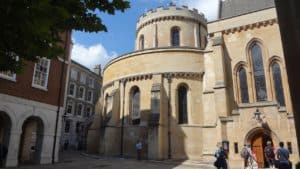Myths of the Afterlife: Ireland and Egypt Compared
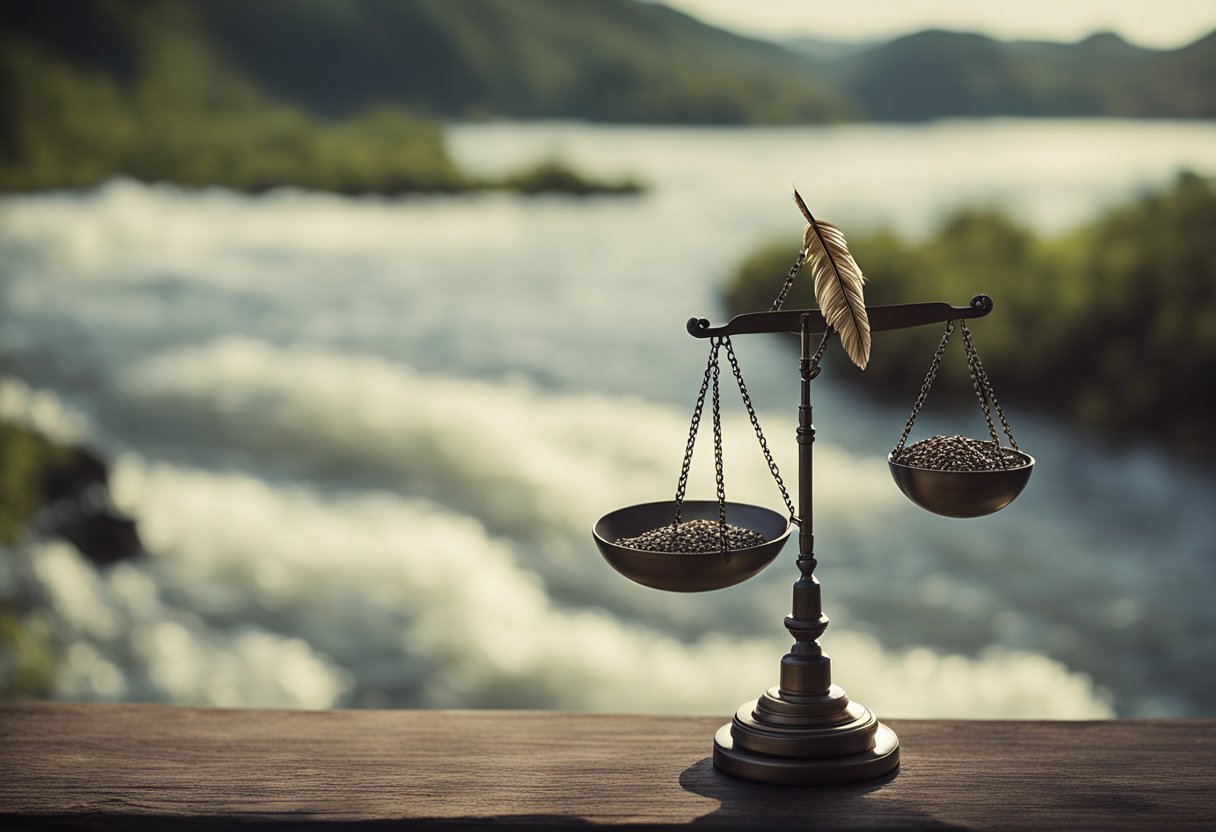
Updated On: April 23, 2024 by Eman Sameh
Exploring the myths of the afterlife of ancient Egypt and Ireland provides a profound insight into how these two distinct cultures envisioned the world beyond. Ancient Egyptians are renowned for their elaborate and detailed concepts of the afterlife, where the soul’s immortality hinged on a complex process of preservation and judgement. In contrast, Irish myths often weave tales of ethereal otherworlds, such as Tír na nÓg, realms where gods and the departed coexist in a timeless state, free from the ravages of age and death.
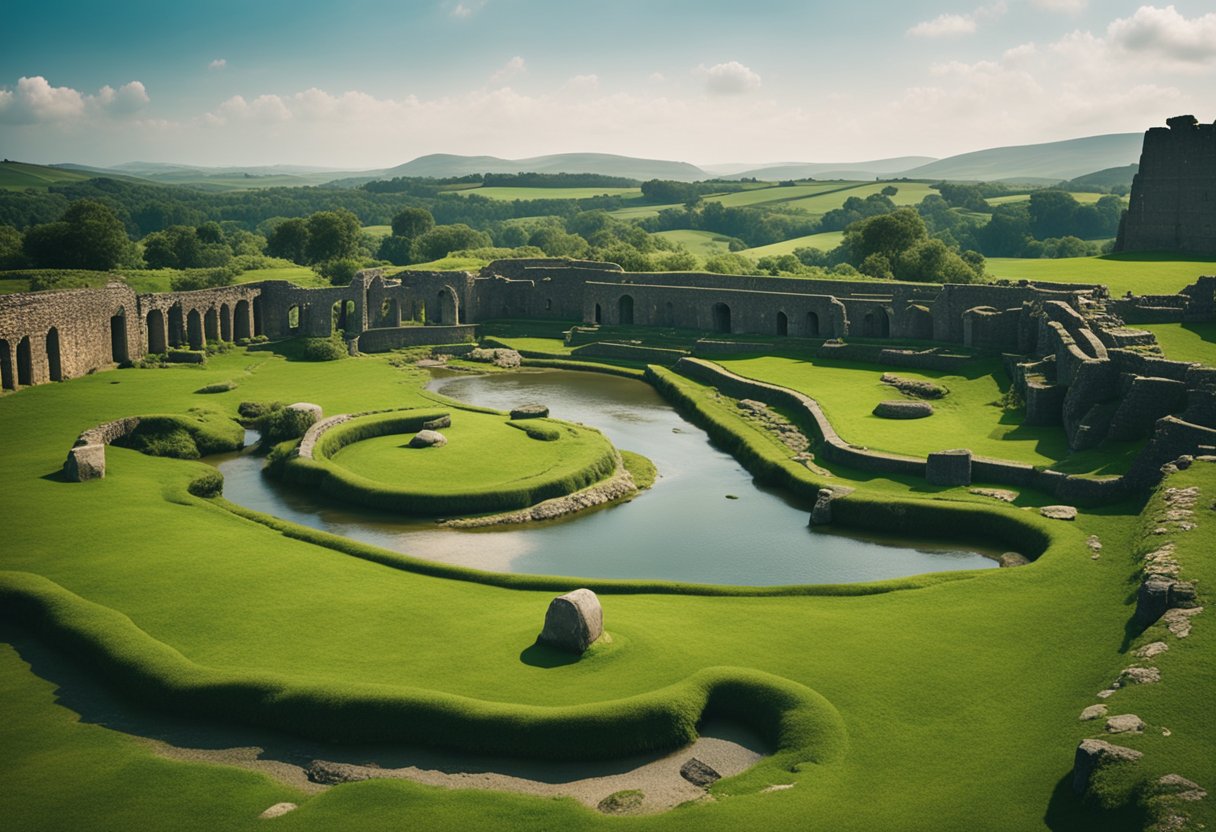
Both civilisations integrated their afterlife myths into their daily lives, influencing their rituals, art, and social structures. In Egypt, the belief in eternal life led to the development of mummification, grand tombs, and the Book of the Dead to guide souls in the afterlife. Meanwhile, Irish lore is replete with accounts of heroes venturing into enchanting otherworlds, reflecting a cultural perspective that death was a transition to a different form of existence. These narratives delve into the mysterious journey of the soul, the concept of rebirth, and the influence of deities holding dominion over death and resurrection.
Conceptualising the Afterlife

In exploring the afterlife within the Irish and Egyptian contexts, we witness a rich tapestry of beliefs that give insight into their cosmological views and theological frameworks.
Theological Underpinnings
The ancient Irish believed in an afterlife that existed in another realm, commonly referred to as the Otherworld. This belief was central to their religion, where the soul was thought to embark on a journey post-mortem. The gods of the Irish pantheon, who inhabited this divine realm, were integral figures in the transition of the soul to eternity. For example, the belief in an afterlife in the Otherworld characterises the ancient Celtic religion, where the soul was considered free from earthly sufferings such as disease and sorrow.
In contrast, ancient Egyptians held a complex view of the afterlife, elaborating a detailed cosmology including a heavenly realm known as the Field of Reeds. Here, it was believed that the soul, upon passing the trials set by the gods in the Duat — the Egyptian underworld — could achieve a peaceful eternity. A key component of this religious belief was the emphasis on preserving the body for the soul’s continued existence, inherently connected to the divine order established by the gods of their extensive pantheon.
Mythical Narratives
The mythical narratives often illuminate our understanding of the afterlife passed down through history. The Celtic Connection: Exploring the Afterlife sheds light on the stories and legends among the Celts. The tales of Annwn and the mythical Isle of Avalon, for example, encapsulate the soul’s journey beyond death within Irish mythology. It’s said the soul would traverse to Annwn, a place of peace and eternal youth, becoming part of the mytho-religious landscape.
Ancient Egypt’s narratives, rich in symbolism and ritual, provide insight into how they conceptualised eternity. The journey of the soul was not merely an abstract concept but a tangible experience narrated through texts such as The Book of the Dead. These texts guided the soul through the perilous underworld, with the hope of reaching the ultimate serenity offered by the Field of Reeds, a mirror of earthly life, devoid of hardships, under the benevolent watch of the gods.
Our exploration of these ancient cultures’ afterlives reveals a profound understanding of the divine and the eternal journey of the soul, reflecting a fundamental aspect of their religious identity and cosmic beliefs.
Deities of Death and Resurrection
Exploring myths of the afterlife reveals profound narratives centred around deities endowed with powers over death and the promise of rebirth. These powerful figures dominated the spiritual landscapes of Ireland and Egypt, each culture offering its own unique mythology concerning life after death.
Irish Deities
The Irish pantheon, though less renowned than its Egyptian counterpart, includes powerful deities associated with death and the afterlife. The Morrigan, in particular, stands out as a complex figure often connected with war and fate. Linked to sovereignty and prophecy as well, she sometimes appears as a harbinger of doom or as one who can guide the souls of the departed to the otherworld. Another notable figure is Dagda, a god of life and death, who possesses a cauldron that is said to offer endless sustenance and, in some interpretations, has restorative qualities akin to resurrection.
Egyptian Deities
In contrast, the Egyptian gods are explicitly linked with detailed notions of death and resurrection. Osiris is the foremost of these. He was once a pharaoh of Egypt who, after being killed and dismembered by his brother Set, was resurrected by his wife Isis. Osiris then became the lord of the afterlife, presiding over the judgment of the dead. The goddess Isis, herself, is revered for her magical prowess and her central role in the resurrection of Osiris, making her a deity of life and rebirth. Nephthys, also involved in the restoration of Osiris and often paired with Isis, provide protective magic and comfort to the dead. Additionally, Anubis, the jackal-headed god, oversees embalming and guides souls to the afterlife. Lastly, Ra, the sun god, traverses the sky by day and the underworld by night, symbolising the cycle of death and rebirth.
Journey of the Soul
In exploring the afterlife mythologies of both Ireland and Egypt, we find profound significance in the journey of the soul after death. This section delves into the rituals and mythic pathways that guide this voyage beyond the mortal realm.
Transition Rituals
In Ireland, transition rituals like the wake are steeped in the communal honouring of the deceased. The wake serves not only as a social gathering but also as a protective rite to ensure safe passage for the soul to the other world. It’s a tangible expression of Irish beliefs surrounding death and the continuation of the spirit.
Conversely, in ancient Egypt, the care of the ba and ka, spiritual components of the human soul, was paramount. The rituals performed ensured these elements could be reunited after death to form the ankh, the transformed spirit. Mummification, accompanied by prayers and offerings, prepared the soul for its journey through the Duat, the Egyptian underworld.
Mythic Pathways
For the ancient Egyptians, the afterlife journey was a perilous trek through the Duat, necessitating guidance from funeral texts like the Book of the Dead. The soul would encounter friendly and hostile forces required to prove its purity before the gods. The boats trailing celestial rivers were essential to this journey, symbolising the passage towards resurrection and eternal life.
Irish mythology recounts the soul crossing into Tir na nÓg, a paradise where youth and happiness are everlasting. This otherworld, often reached by traversing water or through mystical boats, offers a peaceful existence free from sorrow — a stark contrast to the trials faced in the Egyptian Duat. The passage to Tir na nÓg marks the soul’s release from the toils of earthly life, promising serenity in the afterlife.
Together, these narratives from Ireland and Egypt underscore our universal quest to understand life’s final voyage and the enduring quest for immortality.
Judgement and Eternal Justice

In Irish and Egyptian mythologies, the concept of an afterlife is tightly interwoven with themes of judgment and eternal justice. The soul’s morality is scrutinized to determine its fate in the otherworld.
Weighing of the Heart
The ancient Egyptians believed that upon death, the heart—the seat of emotion and intellect—was weighed against the feather of Ma’at, the goddess of truth and justice, in a supreme test overseen by divine judges. This ceremony was a crucial step in the journey through the underworld, upon which the deceased’s eternal destiny hinged. If the heart balanced with Ma’at’s feather, the individual was granted passage to eternal life. However, a heart heavy with sins was devoured by Ammit, the soul-eating monster, resulting in the second death.
Moral Accountability
In contrast, Irish mythology offers no singular judgment event akin to the weighing of the heart. Yet, moral accountability remains essential, resonating through stories of the Otherworld where deeds in life reflected one’s status in death. Celtic tales hinted at a societal judgement, with heroes like Cú Chulainn attaining immortal glory, while those who erred found themselves lingering as restless spirits, admonishing the living to adhere to a virtuous path.
Sacred Texts and Spells
In exploring the ancient Egyptian beliefs about the afterlife, we come across a rich selection of sacred texts and spells that were intended to guide and protect the deceased in their journey to the afterlife. These texts are fundamental to understanding the wisdom literature of ancient Egypt and offer a poignant contrast to the Celtic traditions from Ireland.
Book of the Dead
The Book of the Dead is an ancient Egyptian funerary text written on papyrus and used from the beginning of the New Kingdom to around 50 BCE. It consists of a series of spells that were designed to assist the dead in navigating the afterlife. They were typically placed in the coffin or burial chamber of the deceased. One of the key purposes of these spells was to ensure that the departed soul would be favourably judged by Osiris, the god of the afterlife.
Coffin Texts
Before the Book of the Dead, the Coffin Texts function similarly during the Middle Kingdom (c. 2134-2040 BCE). Written directly on coffin surfaces, these texts evolved from the earlier Pyramid Texts and focused on ensuring the continuation of life after death for the deceased. Spells from the Coffin Texts aimed to protect the soul from perils in the afterlife, offer pathways to the gods and secure a place among the stars.
Symbolism of Tombs and Mummies
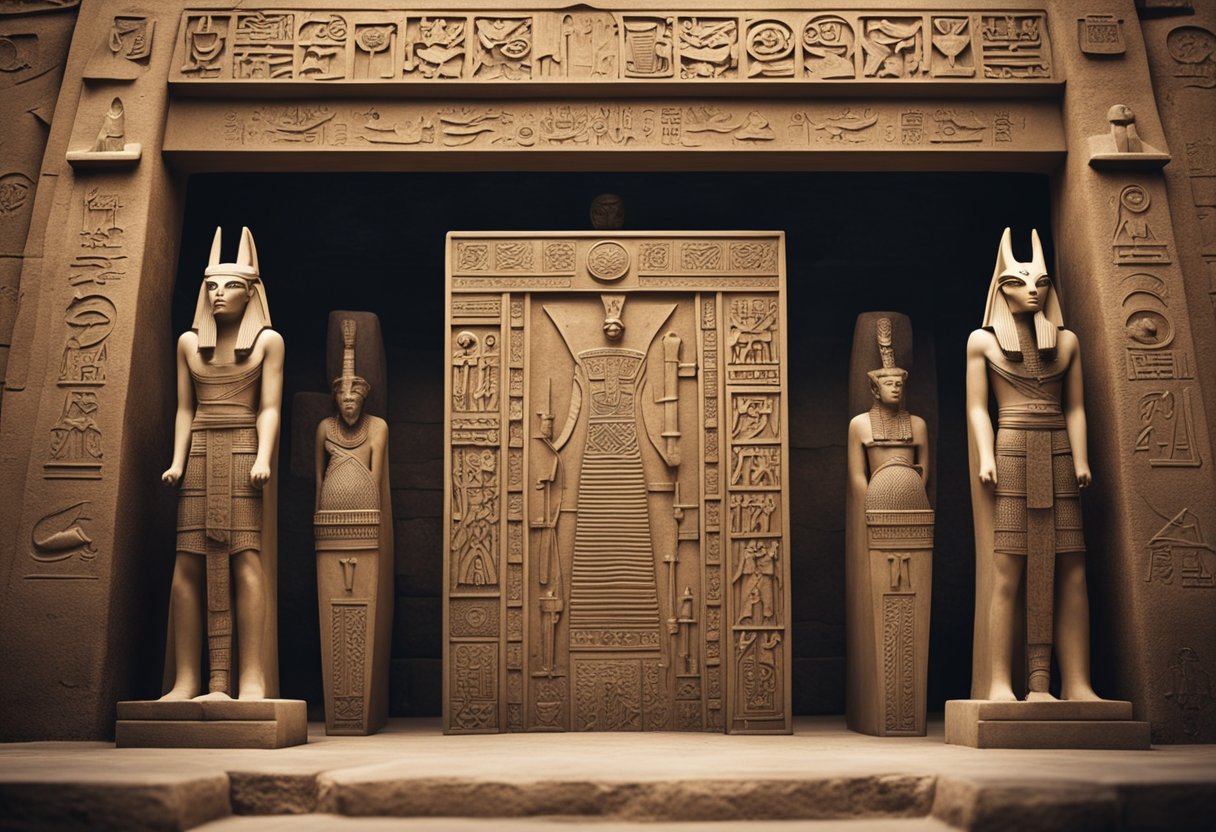
In exploring the myths of the afterlife, it’s imperative to consider the symbolism behind the architectural marvels and funerary customs that encapsulate the beliefs of ancient civilisations.
Architectural Significance
Tombs in both Ireland and Egypt serve as both a final resting place for the departed and a testament to the societies they stem from. The great Pyramids of Giza, intermingled with various mastabas, are not merely ancient wonders but also complex symbols of Egyptian cosmology and pharaonic power. They reflect the importance of the afterlife, as the pyramid shape itself represented the rays of the sun, with which the pharaoh, as a god incarnate, would join. On the other hand, Irish tombs, such as those at Brú na Bóinne, seem more integrated with the earth, showcasing a different kind of respect for the landscape and the deceased. Structures like Newgrange, with their spiralled rock art and alignment with the winter solstice sun, meld the boundary between the temporal and the eternal.
Funerary Practices
The embalming of bodies and forming mummies was central to the Egyptian preparation for the afterlife. The process of mummification served to preserve the deceased for their journey, and each step was filled with symbolic meaning, from the removal of organs to the use of oils and wrapping in linens. In contrast, the Celts did not mummify their dead, but both cultures buried grave goods with the deceased, reinforcing the belief that life continued after death. The Egyptians placed shabtis, servants for the afterlife, and various amulets to protect the soul. The Irish, while their use of grave goods varied widely, often buried weaponry or jewellery with their dead, perhaps as a means for the deceased to carry their status into the next world or to aid them in their journey.
Mystical Creatures and Guardians
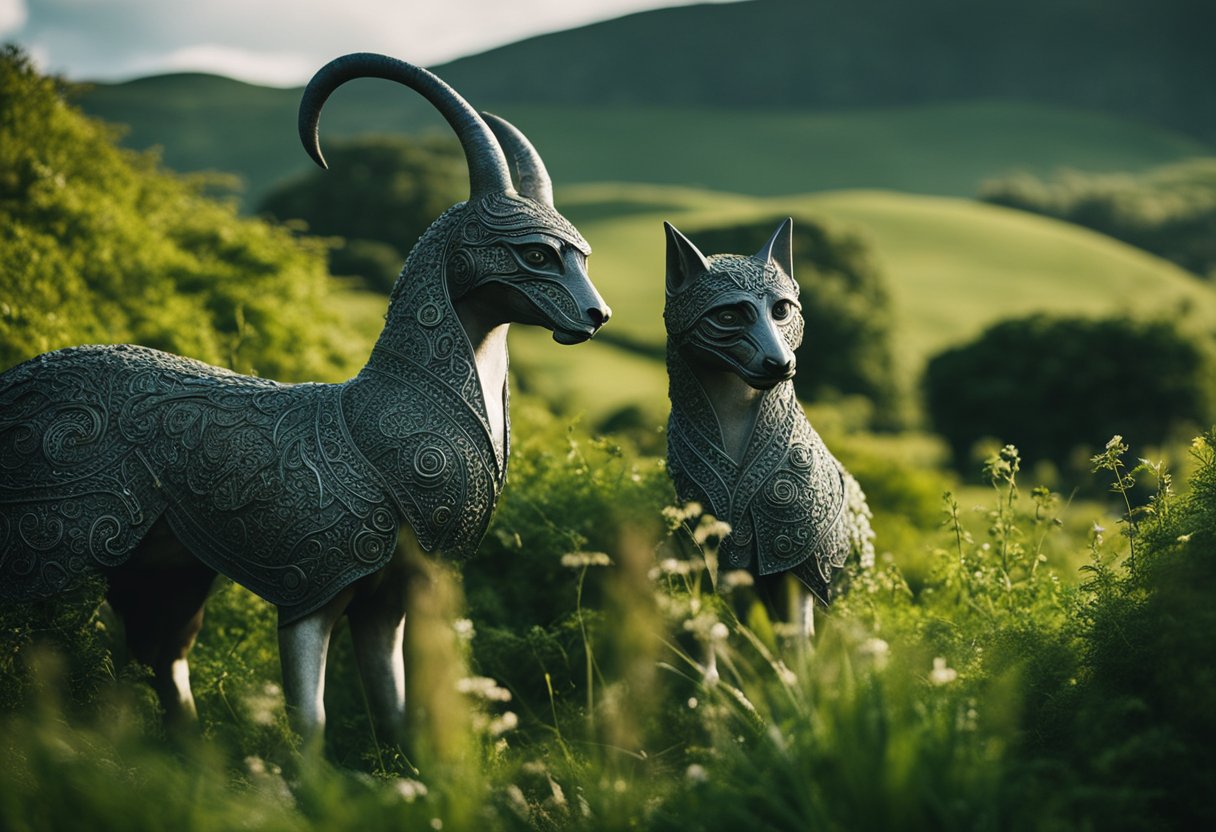
In exploring the mysteries of the afterlife in Irish and Egyptian mythologies, one cannot overlook the critical roles played by various mystical creatures and guardians. These beings serve as protectors or adversaries, deeply influencing the souls’ journey after death.
Protectors of the Dead
In ancient Egypt, Anubis was the god who presided over the embalming process and guided the dead to the afterlife. As a protector of graves, Anubis was revered as the one who weighed the deceased’s heart against the feather of truth to determine their worthiness for entering the afterlife.
In contrast, Irish mythology doesn’t present a singular figure like Anubis. However, it arguably features a plethora of fairy folk and spirits believed to influence the afterlife. While not guardians in the traditional sense, these entities were thought to interact with and impact the souls of the departed.
Adversaries in the Afterlife
The journey to the afterlife was fraught with threats, with adversaries presenting a considerable trial for the deceased’s soul. Egypt’s Book of the Dead alludes to such dangers with entities like Ammut, the devourer—a demoness who stood by the scales while weighing the heart ceremony, ready to consume the unworthy.
Meanwhile, Set, the Egyptian god associated with chaos, was often cast as an adversary due to his murder of Osiris and his role in the struggle against Horus. As an embodiment of disorder, he symbolised the hurdles one might face after death.
Irish lore is similarly rich with tales of demonic entities—often less codified than those of Egypt—yet seen as forces that could disrupt the journey to whatever lay beyond this life. Unlike the Egyptians, the Irish did not have an organised pantheon of demonic adversaries but recognised a variety of malevolent spirits and creatures in their otherworldly narratives.
Cultural Reflections on Death
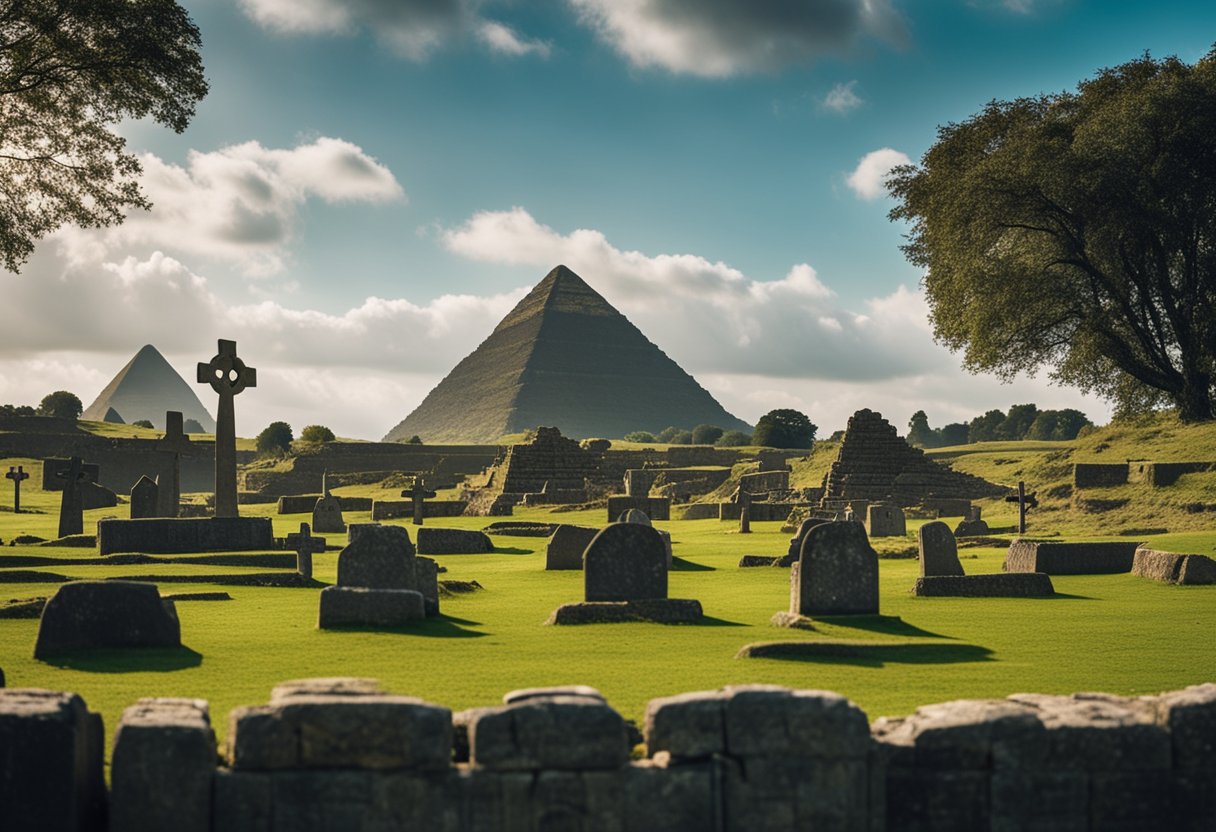
As we explore the intriguing and complex ways cultures relate to death, it becomes evident that burial customs and societal attitudes reflect profound beliefs and values.
Burial Customs
The ancient Irish honoured their dead with distinctive rituals that often involved the construction of large mounds and passage tombs, signifying a reverence for the journey into the afterlife. These monumental structures, as explored in Death, Burial & the Afterlife in the Ancient Celtic Religion, echo the belief in a world beyond our own.
In contrast, the Egyptians meticulously mummified their deceased as a preparation for the afterlife. Egyptian culture imbued every step of this process with significance, linking the preservation of the body to the eternal life of the soul. The practices around mummification were not merely about reverence but were also deeply interconnected with the Egyptian understanding of fertility and vegetation, the cycles of which were mirrored in their myths of death and rebirth.
Death in Society
Within Irish society, death was not a mere end but a transition, a change in existence that sustained a connection between the community and the Otherworld. The Celts’ belief system, especially before the onset of Christianity, accepted death as a vital part of life’s cycle, much like the seasonal changes that influenced vegetation and agricultural patterns.
The societal role of death in ancient Egypt was immensely influential, with pharaohs and commoners alike striving to secure their place in the afterlife. Great tombs and elaborate burial sites, such as the renowned pyramids, were a testament to this cultural obsession. Such an emphasis on the afterlife enforced the social order, binding the community through shared religious beliefs and an intricate web of funeral rites and practices connected to the land’s fertility.
In discussing these culturally rich rituals and beliefs surrounding death, we can see our common human preoccupation with what lies beyond life, manifesting in ritualistic and societal structures that have intrigued us for millennia.
Rebirth and the Eternal Cycle
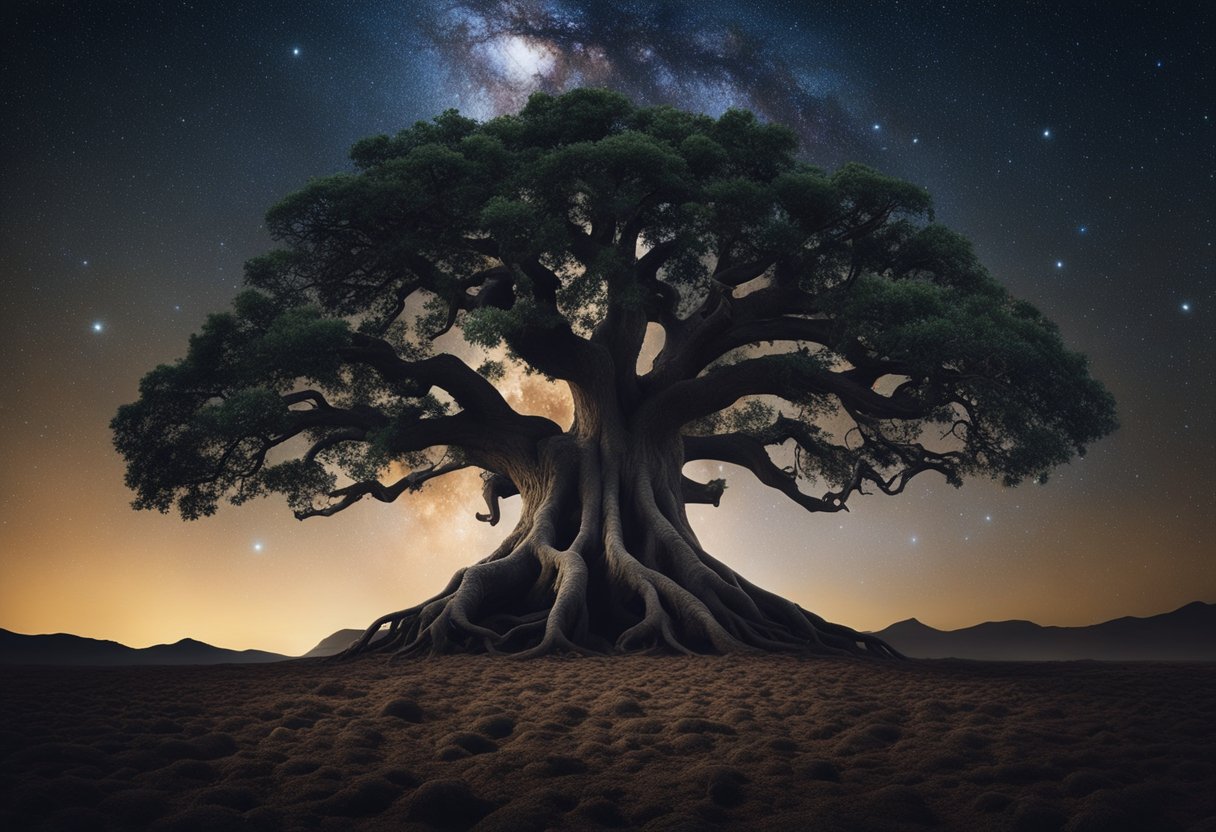
Within the rich tapestry of Irish and Egyptian mythologies, the themes of rebirth and the eternal cycle stand paramount, deeply intertwined with nature and the cosmos.
Transcendence and Reincarnation
In Irish myth, the notion of reincarnation is a spirited dance with the metaphysical. We find tales of figures such as Étaín, who transforms across multiple lifetimes, illustrating a belief in the continuity of the soul. This transcendent journey speaks to an eternal life, transcending the physical realm.
Egyptian mythology, on the other hand, offers a vivid portrayal of resurrection, encapsulated by the myth of Osiris. He was not only resurrected but also became the lord of the afterlife, ensuring the renewal of both spirit and flesh for those deemed worthy. Through elaborate rituals and the mummification process, Egyptians demonstrated the profound significance they placed on an afterlife imbued with rebirth and persistence.
Agricultural and Cosmological Cycles
Our ancestors sought to understand the cycles of life, and nowhere is this better observed than in their observations of the Nile flood and their reverence for crops, which are both crucial for sustenance and symbolic of new beginnings. The Egyptians, particularly, venerated the annual flooding of the Nile, as it was the cornerstone of their agricultural cycle, reflecting the overarching cosmic order.
In Egypt and Ireland, the cycles of sowing and harvest were imbued with spiritual significance. These agricultural cycles reflected the larger cosmic rhythms, such as the revolutions of the stars and the cycles of day and night, which were believed to mirror their gods’ eternal nature. For the Irish, seasonal festivals like Samhain and Beltane marked moments of transition in these cycles, deeply rooted in the natural world’s rhythms.
Ceremonies, Offerings, and Gratitude
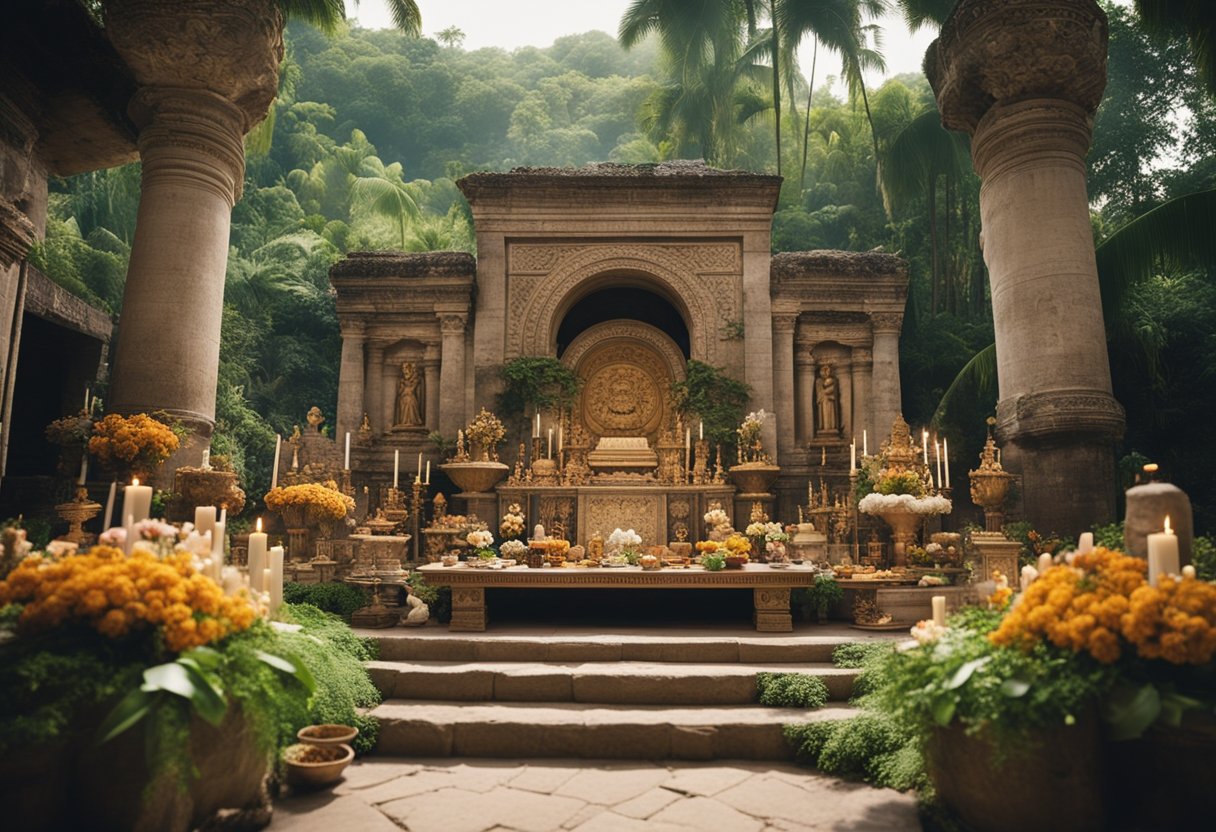
In both Irish and Egyptian cultures, ceremonies and offerings played pivotal roles in expressing gratitude to the deities and ensuring a favourable afterlife. The rituals reflected deeply ingrained beliefs and were integral to both daily life and key festivals.
Rituals of Thanks
In Irish culture, there is a strong tradition of festivals such as Samhain, where thanks are given for the harvest with merrymaking and feasting. The occasion often involves the pouring of beer as a libation to honour the Ancestors and the Aos Sí, the spirits of nature. Similarly, ancient Egyptians held festivals aligned with the agricultural cycle. Offerings, including food items such as bread and beer, were made to deities like Osiris, assuring the regeneration of life.
Funerary Offerings
When it came to funerary practices, both cultures took great care with offerings to support the dead in their journey to the afterlife. The Irish placed grave offerings, sometimes food or personal items, to accompany the deceased. In Egypt, this practice was elaborate, with food and valuable possessions entombed alongside mummies. The sycamore tree in Egypt was venerated; offerings were made to it as it was thought to connect the worlds of the living and the dead.
Afterlife in Modern Perspective
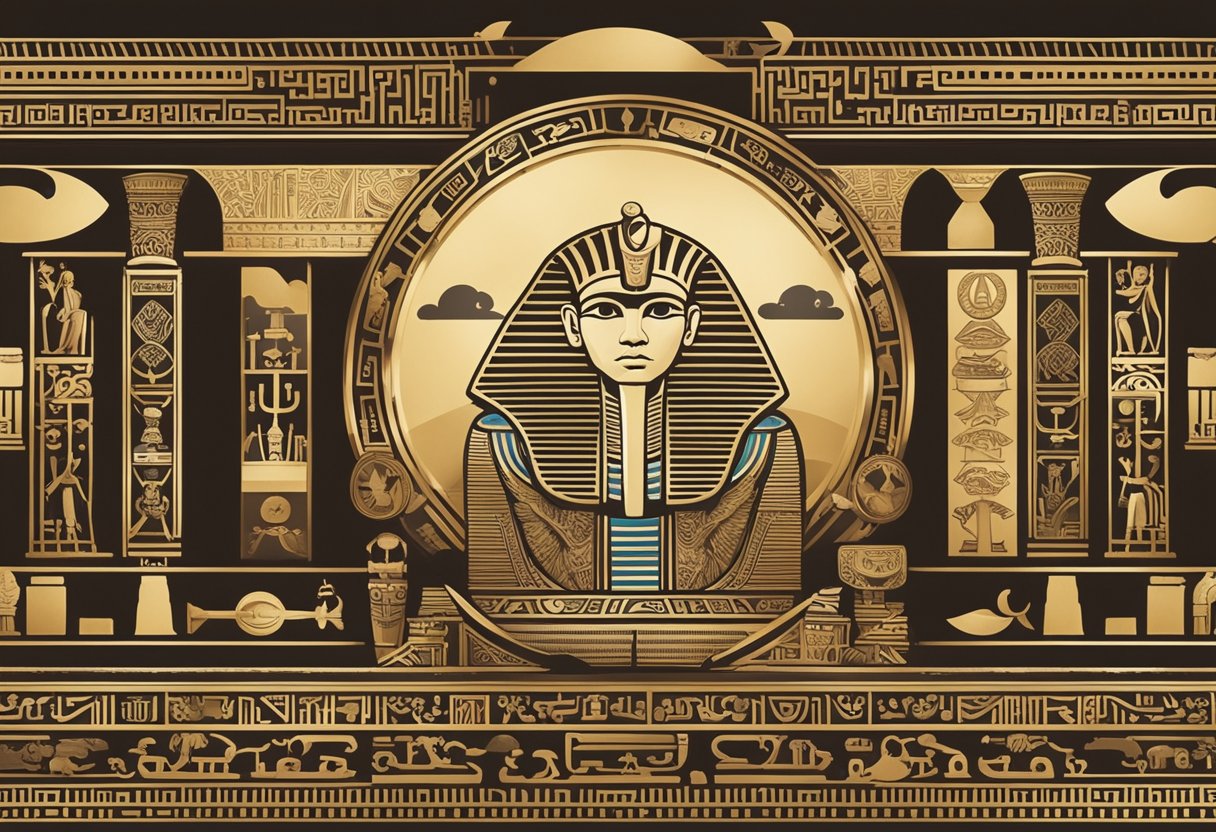
The afterlife has remained a mystical concept that intrigues and comforts people of all ages. With roots in ancient beliefs, we see a translation of these ideas into our modern world, reflecting not only continuity but also transformation in our cultural understanding.
Contemporary Interpretations
Our modern interpretations of the afterlife draw heavily on our ancestor’s legacy, weaving ancient Egyptian notions with our current spiritual and philosophical beliefs. The ancient Egyptian concept of an eternal journey influenced today’s ideas about the continuity of the soul and the quest for divine wisdom. The Field of Reeds is a cultural archetype for paradise, which persists in many people’s hopes for a peaceful afterlife.
Cultural depictions range from literal interpretations of ancient texts to symbolic representations in arts and literature. In our contemporary society, meditation and mindfulness practices often echo the ancient quest for spiritual peace and understanding, translating the idea of a transcendent state into a personal experience of inner tranquillity.
Legacy and Influence
The legacy of ancient Egyptian beliefs is visible in our current art, architecture, and literature. Their grandiose monuments and meticulous burial practices indicate a rich understanding of the afterlife that holds a mirror to our current fixation with immortality and legacy.
We continue to pay homage to these powerful cultural narratives, demonstrating the broad influence of ancient civilisations on our understanding of life and the hereafter. The eternalising of names and deeds through digital footprints and modern memorials resonates with the Egyptians’ engraving of names on tombs, a homage to life’s fleeting nature and our desire for permanence beyond it.
Frequently Asked Questions
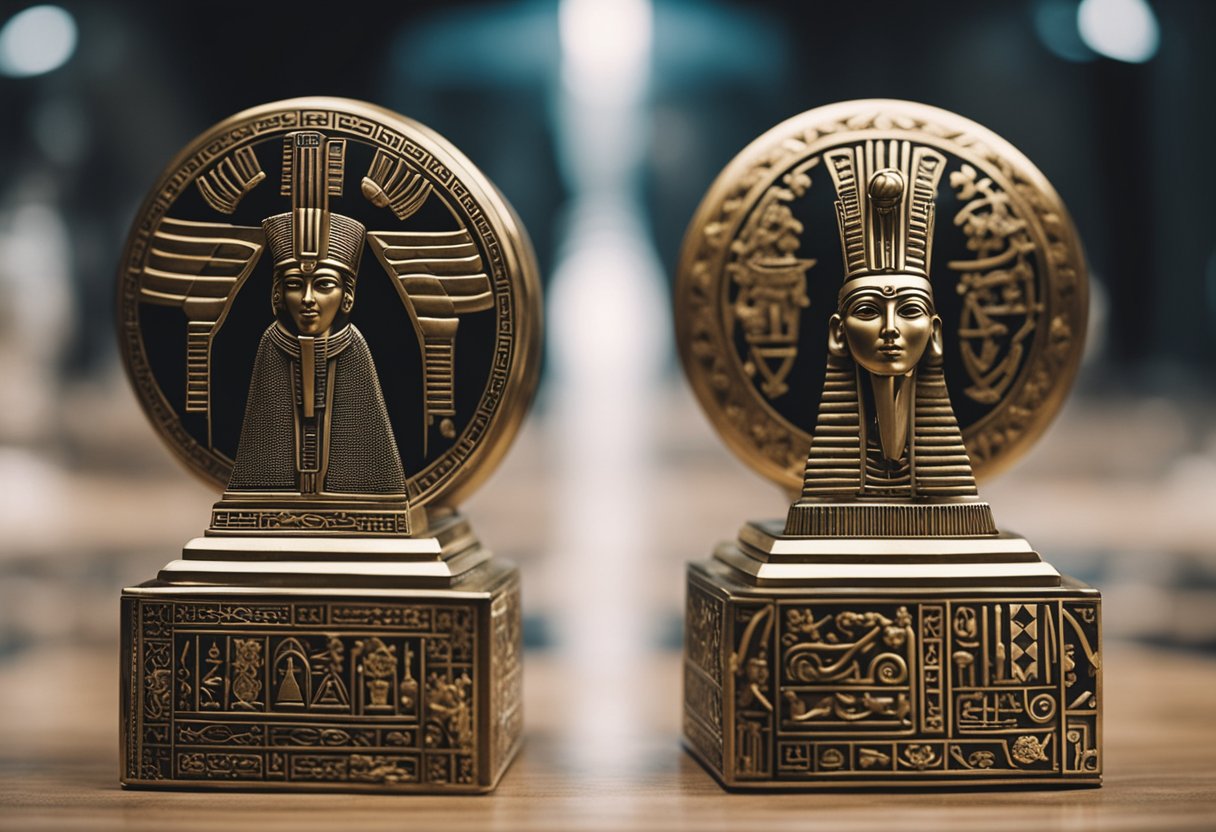
In this section, we’ll explore the intriguing comparisons and contrasts between Irish and Egyptian myths surrounding the afterlife, delving into their unique cultural tapestries.
What are the commonalities and differences between Irish and Egyptian afterlife myths?
Irish and Egyptian afterlife myths both encompass journeys after death. While Egyptians focused on a passage to the Field of Reeds with the heart weighed against the Feather of Truth, Irish tales often revolve around ethereal otherworlds like Tír na nÓg, a place of eternal youth and beauty.
How do Irish myths of the afterlife compare to ancient Egyptian beliefs?
Irish afterlife myths generally imply a magical realm free of time, whereas ancient Egyptian beliefs involve a more structured afterlife, replete with challenges to overcome, such as the weighing of the heart to determine one’s eternal destination.
What role does judgement play in the afterlife according to Egyptian mythology?
Judgement is central in Egyptian mythology, with the dead facing the scale of Maat. Here, the heart is assessed against the Feather of Truth, determining whether a soul would attain the bliss of the afterlife or be devoured by the beast Ammit.
Are there any indications of Egyptian influence in Irish afterlife legends?
There are no direct indications of Egyptian influences on Irish afterlife legends. Both cultures developed their afterlife myths independently, with the Irish tales deeply rooted in Celtic beliefs and Egyptian ones in their ancient religious convictions.
How is the journey of the soul depicted in Irish and Egyptian afterlife traditions?
In Irish tradition, the soul often embarks on a voyage to an otherworldly island, while in Egyptian belief, the soul traverses the Duat, facing trials to reach the afterlife. Both journeys are transformative and symbolic of cultural attitudes towards death and rebirth.
In what ways did art reflect the Egyptian concept of the afterlife?
Egyptian art extensively reflected the afterlife concept through tomb paintings and artefacts. These depicted the journey of the dead and the paradisiacal afterlife, intending to guide and protect the deceased in their passage to the next world.




